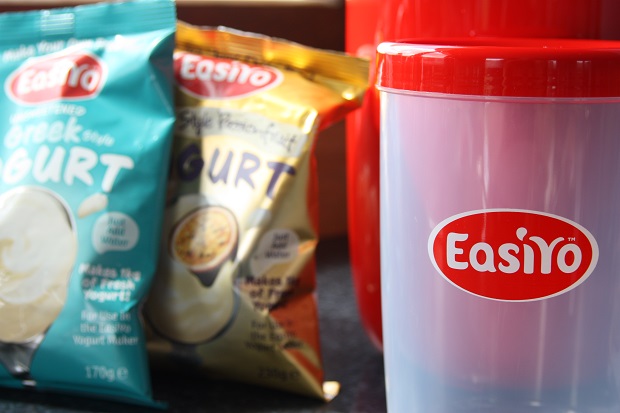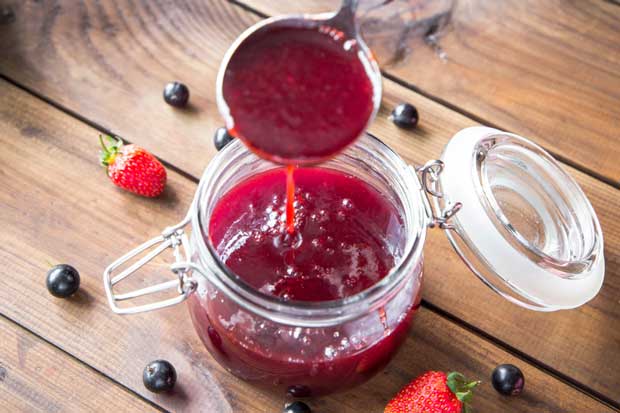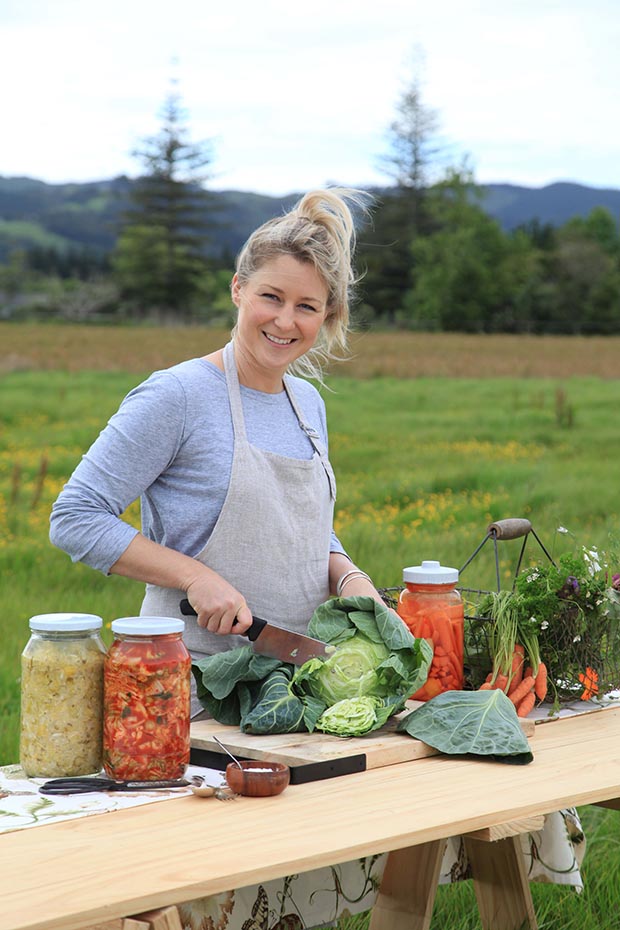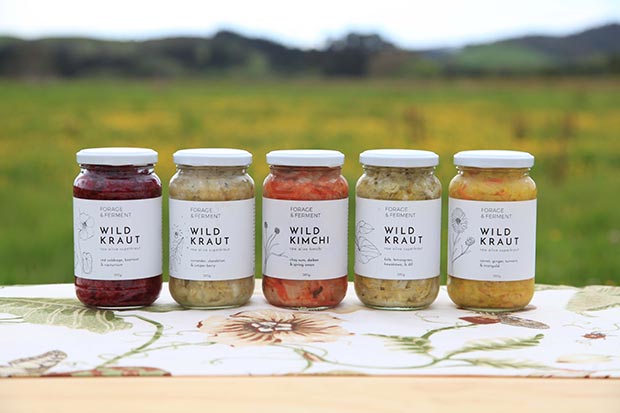9 secrets to turning your artisan product into a supermarket star

Getting your great food idea into a supermarket is the holy grail for many people. Food product developer Martyn Atack looks at why you need to start with pen and paper in your office, not the kitchen.
Words Nadene Hall

About the Martyn
Martyn Atack of Cogito Foods is a qualified, independent, consultant food technologist and food product developer and has worked for EasiYo, Tip Top Ice Cream and Kapiti Cheese.
www.cogito.co.nz
When physics teacher Len Light wanted to easily and cheaply make fresh, delicious yoghurt for his eight children, he headed out to his shed.
“I was pretty good at making home brew so I thought it couldn’t be too hard to make a yoghurt maker.”

It took a few years of experiments before he and wife Kathy mastered a way to produce perfect yoghurt every time. They took their idea to the Auckland Home Show in 1992 and sold 600 of what they called the EasiYo Yogurt Making System. Today, this multi-award-winning product line is owned by Westland Milk Products (the Lights sold out in 2010), and has sold well over a million units in more than 20 countries.
Food product developer Martyn Atack’s life work is helping food producers bring their dreams to life, and that has included EasiYo, Tip Top Ice Cream and Kapiti Cheese.
But a lot of great food ideas never turn up on your supermarket shelf. Martyn says no-one has ever come to him with a bad food idea, but many are destined never to make it out of a would-be producer’s kitchen.

“In many respects, it doesn’t really matter whether the product is a good idea or not. What really matters is what the owner has to drive the product into the market. What resources do they have? What energy do they have? What story do they have to tell that compels people to buy the product?”
The first basic question any food producer needs to know: can this idea make a profit?
IS YOUR FOOD PRODUCT A GOOD IDEA?
“That’s quite often one of the first questions off people’s lips,” says Martyn. “But it’s the wrong question. One of the key things to understand is that there’s no value in having a good idea. A good idea only begins to obtain value when people put effort into converting it into something real. A better question is how many other people (consumers) think it’s a good idea?”
His advice is to start with the end-result in mind, then ask yourself:
• what price your product will retail for (including GST)?
• what retail gross margin should be applied?
• where will it sit in a supermarket?
• what packaging size will it be?
For example, let’s say you’re going to make a product that will be sold in a 500g pottle for $5.99. Take away GST (78c) and retail GP (gross profit, 25 per cent) and your wholesale price is $3.91. But there may be a surprise waiting for you, says Martyn.
“The supermarket says, ‘hang on, we’re going to list this product in our magazine so you’ve got to give us a 10 per cent rebate on that because that’s a marketing contribution. There’s an 8 per cent distribution premium, and we know that 0.5 per cent of that stock is going to be broken so that’s 0.5 per cent for ullage. Oh, and we’re going to pay you on time, so that’s another 2.5 percent.’”
The result is your list price which is $2.80. If you know your input costs, this allows you to work out your profit margin. But you need to be careful, says Martyn.
“For example, if you’re making 20 cents pure profit on this product per unit after tax, and it’s going to take you six months to sell 25,000 units, then that’s $5000 pure profit,” says Martyn. “You might go ‘it’s going to take me 40 hours a week. I’m making $833 profit a month. Do I really want to do this project for that kind of return?’”
The idea might work if you’re selling at a farmers’ market says Martyn, because you retain all the margin, but is that where you want to stay?
If you can get an idea over this first big hurdle (and many don’t, for lots of reasons), you’re still not at the point where you’re ready to make something.

5 THINGS YOU NEED TO DISCOVER ABOUT YOUR IDEA
If it looks like your product can make a profit, you need to then work out what you don’t know about it:
• what are the regulatory requirements, eg food safety?
• is there a contractor who could manufacture it for you?
• is the packaging you want readily available, what does it cost, what is the minimum order, what is the lead time?
• are the ingredients you want readily available, what does it cost, what is the minimum order, what is the lead time?
• are there any other constraints?
That last question can be a minefield if you are creating a complex product, for example something that is vegan, sugar-free, gluten-free and organic.
“That’s a fairly daunting set of constraints,” says Martyn. “Is it practical to produce a product with those criteria? A developer will quickly be able to bring up red flags. You never know when fishhooks that are not immediately obvious are going to pop up. The point of this discovery is to try and identify them so you can make informed decisions on how to manage those before you spend any money on the next stage.”
THE BEST TIME OF YEAR TO LAUNCH A NEW FOOD PRODUCT
There is almost always a natural launch period for food, says Martyn. It is based around the supermarket buying cycles of September-October (summer product launch) and April-May (winter products). If you want your summery food product in a supermarket in September, you need to think a year out.
“If you’re not ready until (spring) you are out of luck,” says Martyn. “All the (food manufacturing) contractors know exactly what they’re doing for the coming summer season and trying to engage with a contractor is almost pointless. The problem after that is in January they don’t want to talk to you because most of their staff are on holiday and they’ve got a skeleton crew. You don’t start to engage with them again until February and then it becomes too late for April-May – you just don’t have the development time.”

THE POWER OF THE FARMERS’ MARKET
The rise of the farmers’ market has created the ideal consumer feedback pool for the artisan producer.
One of the most famous in NZ is Anathoth Jam which started when Nelson raspberry growers Owen and Kaye Pope needed to do something with their excess fruit. They started making jam on their farm and it quickly became a favourite at their local market. The Popes sold the business in 2003 and it’s now owned by one of the world’s largest jam-making companies, Andros (which also owns Barkers).
“A lot of very successful products have started in farmers’ markets and it’s a really good way of taking the initial steps,” says Martyn. “Anathoth Jams is about the biggest selling brand on (New Zealand) supermarket shelves.”
You can also refine a product’s characteristics at a farmers’ market says Martyn.
“The idea is that you don’t have to sweat the small stuff. You just put it in the right ballpark and let consumers tell you directly what they like. They might say ‘yes, it’s just perfectly sweet but it’s a fraction salty’. And you can say ‘aha, I can adjust the saltiness’ or any other characteristic which is important.”
GOING FROM ARTISAN TO BIG TIME

Making a product in small batches in your own kitchen is one thing. But scaling it up to a manufacturing process can be difficult or in some cases, impossible.
Kelli Walker of Forage & Ferment is fermenting her kimchi and sauerkraut in traditional ceramic pots, albeit ones that are 40 litres in size, almost 10 times bigger than her home kitchen versions.
“We’ve got big ceramic crocks that are heavy, so once they’re filled you can’t move them. We have to put everything on trolleys so we can move them and these things take up a lot of space. We’re lucky the commercial kitchen we use has a big storage area.”
Turning this hands-on process into a machine-manufactured product is not something Kelli feels is possible.
“I think that’s where the magic is, where the love needs to be and that we need to be owning the fermentation process. We consider ourselves to be a fermentory, taking care of the microbes throughout the whole transformative process.
“I guess in time our model will be more about having our own premises. There’s some really beautiful examples overseas, where they either integrate with a café or sell at the farm gate.”
For those who can and do want to upscale, Martyn says contracting manufacturers have minimums, often far too high and unaffordable for a small producer. That’s where the FoodBowl in Auckland has been a huge step forward. It allows small producers to hire a fully set-up industrial food manufacturing premises with a big range of specialist equipment. They can then do a run of product, either a one-off or make a regular booking.
“The requirements for industry are often quite large,” says Martyn. “Scale matters to them and many of the contractors just can’t do small-scale stuff. But when the FoodBowl came along, this provided a mechanism for people to bridge that gap.”
Another common issue when scaling up is ingredients suddenly become a problem.
“Many ingredients that might be available on a household scale are not necessarily available on an industrial scale,” says Martyn. “I had one client who would have liked to use Lurpak butter in her product. This is manufactured in Europe and it’s really, really expensive. To have scaled her product up using Lurpak butter would have been prohibitive.
“The right question is, does it matter to consumers? There may be a taste difference but that’s not a question to be asking either. The question is, does the taste difference matter and that’s the only thing that’s important.
“You have to be prepared to make compromises in order to be able to scale up. There has to be flexibility.”
THE REALLY HARD WORK
Creating and developing a product can be very creative and a lot of fun. The real hard work is the commercial side. You need to become very good at sales and marketing, or hire someone to do it. The basics are:
• What is your sales plan?
• How are you going to identify and tackle channels to market?
• How are you going to engage with those channels, eg do it yourself or hire a salesperson?
• How will you distribute your product to those markets?
A small producer who is making and packaging and getting product ready for distribution is going to be busy says Martyn.
“So who is going to sell it? It all comes down to what resources you have to drive the product into the market.”
WHY YOU CAN’T BOWL UP TO A SUPERMARKET AND SELL
Every supermarket in the world, no matter how big, has one limitation: shelf space. For you to get your product onto their shelf, you need to prove your product can do a better job than one that is already being sold.
“It’s a mistake for people to think that they can go directly to supermarkets, it just doesn’t happen that way,” says Martyn. “The supermarket buyer is going to say ‘what product do I need to take off my shelves to stock yours?’ and ‘how much money is your product going to make over the one that I took off to put yours on?’”
The key to answering those questions is showing them a sales history. But if you can’t sell in a supermarket, how do you get a sales history? Farmers’ markets are one option. The rise of delicatessen stores and niche supermarkets like Farro are another says Martyn.
There’s also one supermarket chain that has a back door, if you are willing to hustle.
“Foodstuffs (Pak’nSave, New World) are quite useful because they are all owner-operated outlets. You can sometimes go to the owner and convince them to range the product on their shelves and get some traction that way.”
If you can convince one owner, and then a couple more, and your product does well, you might be able to get a wider listing with Foodstuffs. It will be conditional, says Martyn, usually confined to a small geographic region, eg the lower North Island. But you can use a good sales record to then show proof to a buyer for another region, eg the upper North Island.
“You can build up a series of individual owners selling products and the only thing is this all takes effort,” says Martyn. “You’ve got to deal with each one of these people individually and it takes time and resources.”
Progressive Enterprises (Countdown) is more difficult and uses a central buying system that is very hard to crack. However, if you can present a successful sales record to a category buyer from another chain, they may choose to test it in a small number of stores and go from there.

WHY YOU NEED MORE THAN ONE PRODUCT, PREFERABLY FIVE
That valuable shelf space in a supermarket is a big advertisement to shoppers. The more variations on your product you can get into a store, the better you’ll do.
“The reason for that is one ‘facing’ gets lost,” says Martyn. “You should go to market with three variants because that gives you physical shelf space and it helps attract the eye.”
Then you need two more that are ready to follow, and fast because in Martyn’s experience, some flavours won’t resonate with customers.
“Two of (the original three) are going to fail and then you’ll be left with one product on the shelf and supermarkets will be reluctant to carry one product so you need to work on the assumption that two will fail.”
HOW MUCH DOES IT COST TO CREATE A PRODUCT?
This question is hard to answer says Martyn, because there are so many different types of foods and packaging. What he can tell you is the first product in a line is always the most expensive.
“It costs way more to develop the first product than it does to add on another four. You always have to do all the bulk of the work on the first variant, whatever that is. It’s not uncommon to need to budget on or about $10,000 to have that first product developed, but it still might cost $30-$35,000 to get five products in hand… and that’s just ballpark.
“You can’t really say for sure what it’s going to be because complexity can be your friend or it can be you foe. Complexity on one hand makes it difficult for competitors to want to bother copying your product. It’s also expensive and, in some ways, it affords a little protection.
“But probably more important is your ability to drive a product into market – that’s your real protection.”
READ MORE ABOUT INSPIRING NEW ZEALAND ARTISAN FOOD BUSINESSES
Great Barrier Island herbal tonic business, Aotea, in growth mode
Recipe: Forage & Ferment’s Wild Sauerkraut with Turmeric, Ginger and Marigold
Absolute Angus named supreme winner of the Outstanding NZ Food Producer Awards

